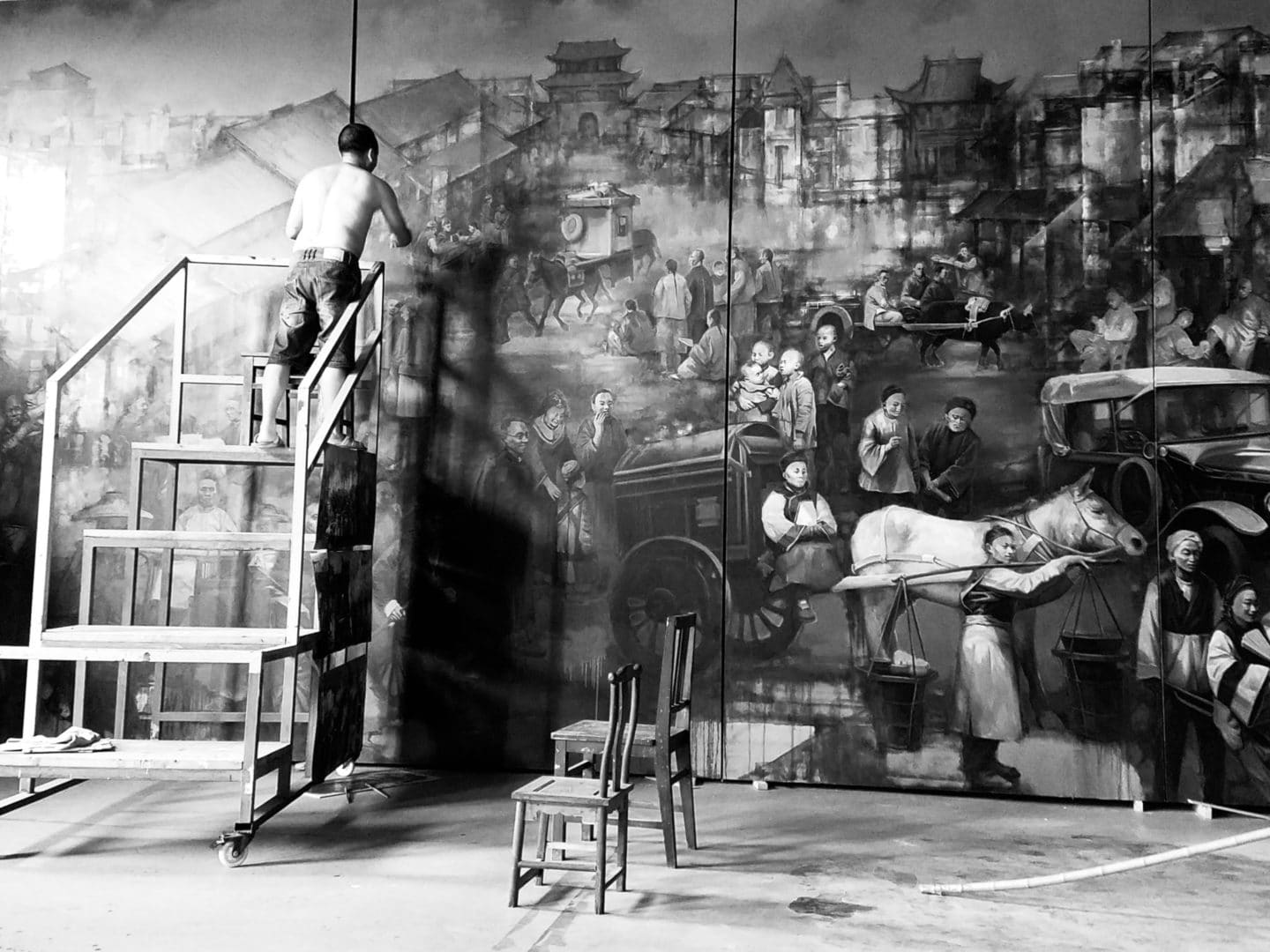
News: A Painting In Production For 6 Years
Artists, Gallery News, Interviews
A wall-sized painting usually measures 2m wide and 1.5m tall, taking an artist several months to work on. Chinese Contemporary artist Liao Zhenwu has achieved an incredible feat with his recently completed painting that measures 30m wide and 4m tall.
'Stories of The Republic of China' has been in production since June 2012 for six full years. During this period, the work had outgrown its space and relocated three times. From its sheer size, relocating the works has been a complicated process.
Click on the image below to get a full view of his work.
To gain a better idea of Liao Zhenwu's work of art, follow academic host Xia Kejun's review below:
Liao Zhenwu's Re-presentation of the Republic of China: Traces and Truthfulness of Paintings
By Xia Kejun
The process of modernization brought by globalization is far from coming to an end, the same as the modernization of China. Basically, the changes in China, in fact, hasn't even started yet. Because, in part, we always end up getting back to the start point. With "one step forward, two steps backward", this transition becomes immensely difficult.
Given this reality, it becomes essential for us to recall our history of how our society changes in the past 100 years. This very chapter has been neglected by our people. But today, those memories are bound to come to light again.
The re-presentation of the time of the Republic of China is sparked by the artist's spirit of pursuing freedom and self-reflection. To re-depict the twists and turns in the process of transiting from an ancient country to a modernized one should be the obligation of an artist and even of every Chinese to reflect critically on the current society.
Born in Sichuan, China, Liao Zhenwu has lived in Beijing for more than 10 years. In 2012, he was determined to compose a magnificent work. He spent 6 years and painted for numerous times. Finally, a masterpiece that is 4 meters high, 30 meters long was created. The re-presentation of 4 China's representative cities (Sichuan-Guangzhou-Beijing-Shanghai) during the time of the Republic of China between 1900 to 1930 means more than a painting, but also a Republic of China, a history, a memory and a renewal of an image for the painter.
This great work of 30 screens has fused three elements together as a way to represent the transition and manifestation of modernization.
The first element is the high buildings which include the characteristic buildings of Sichuan, Anhui, Jiangnan and Shanghai.
These buildings generate a sense of dignity familiar to monuments. However, they are all under the wash of history. The eroded surface symbolizes the power of time and also generates a sense familiar to Chinese traditional landscape painting: after unfolding a historical drawing, you will feel that the history of nature is hidden between gray sky and bleak trees.
The second element is transportation and vehicles in the foreground.
Liao had painted motorcycles in cities. His thoughts for speed and transportation are materialized with the concept of time.
From cart to tricycle and vintage car to steam train, the changes have shown us that the wheels of history can never be reversed. The development of the tools requires Chinese to once again show their respect to science as they do at the time of the Republic of China.
These objects are clear in the painting and are almost pictured in a hyper realistic way, reflecting the objectivity of the vehicles or time.
The third element is the Chinese at the middle of the drawing who still keep the braid, a historical left-over of Qing Dynasty. Some still wear mandarin-jackets and some in suits. The change of clothes is actually resulted from the transformation of self-image of Chinese people. These characters in the paintings are not completely copied from the history, but instead, they are actually "the ideal images" that are applied to show how identities or self-awareness transformed at the time.
From the picture, we can not only know their social status or identity but also their sweat and efforts. We can sense that they are confronted with both the burden of heavy history and the speed of transportation.
However, this painting aims not to stress any particular person. Therefore, it is not a faithful depiction of the history. But it actually entails some "false portraits", which explain why these people are suffered with the struggle between coming forward and stepping backward.
Through the painting, we have seen not only a bitter and blurred face of the culture of China but also the vicissitudes and miseries of the Chinese history, making us feel the compassion of the artist.
To put these three elements into one painting, Liao is skillful in technique and expression of sentiment.
The painting looks like an old photo, not in a realistic manner but in an ink-washed painting fashion. The burning heart of history and coldness hidden in memories are placed in his painting.
The modernization of China should start again. The memories depicted by the painting have its own connotation of truth: when artists are in the middle of the chaos of the present days, they can still restore the bitter and blurred face of the culture in the state of transformation.
In the respect of time, the author makes us taste a bite of time in the Republic of China which entails that the Chinese has unshakable will for freedom and happiness.
The value of this masterpiece in present day requires further discussion and study from various respects, such as its depiction of modernization, its value of painting language and iconology and extensive sociology.
(November 2018)





Art Works is Asia’s leading contemporary art investment gallery, providing advice to investors seeking to capitalize on the fast-appreciating art market.
